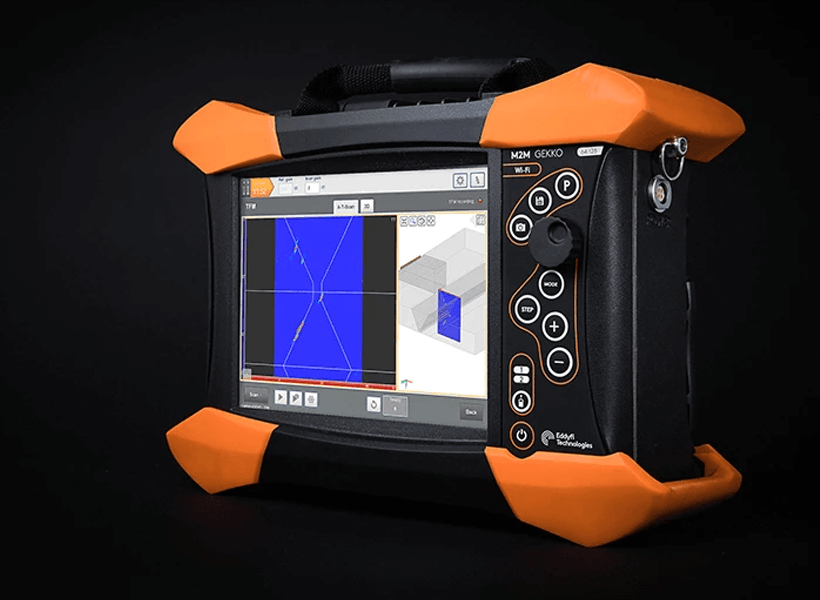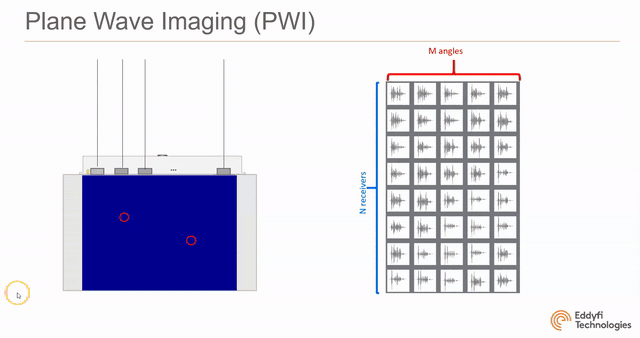Welding Inspection Technology: The Latest in the Non-Destructive Testing of Welds
Welding is inspected using many different non-destructive testing methods. However, some of these inspection methods are more accurate and comprehensive than others. Thanks to advancements in technology, welding inspection technology has come a long way in recent years. New technology allows welding inspectors to provide results faster and more economically with greater accuracy and detail.
Let’s take a look at some of the advanced welding inspection technology that makes this possible.
Latest welding inspection technology
- Phased Array Ultrasonic Technology
- Time of Flight Diffraction
- Total Focus Method
- Laser-Induced Breakdown Spectroscopy
Choosing a non-destructive testing company for weld inspections
The Latest in Welding Inspection Technology
There are four key technologies that have helped to improve welding inspection.
These advancements in welding inspection technology offer many benefits. Therefore, when working with a non-destructive testing company that employs these advanced techniques and tools, organizations will benefit from:
- Increased productivity
- Cost savings
- Higher quality inspections
Phased Array Ultrasonic Technology (PAUT)
What is PAUT?
Phased array ultrasonic testing, or PAUT, is a form of ultrasonic weld inspection. PAUT uses a single array of transducers to employ various ultrasonic beams at different angles and focal lengths. Multiple elements are pulsed in a patterned sequence. This allows specialized software to control the angle and focus of each beam, resulting in a more detailed scan.
Phased array ultrasonic testing capabilities
PAUT accurately detects various flaws and defects. As a result of its ability to evaluate materials and equipment from various angles, it is extremely effective for testing assets with complex structures.
Phased array ultrasonic testing is particularly well-suited for weld inspection. This welding inspection technology can detect flaws such as:
- Lack of sidewall fusion, root penetration and root fusion
- Porosity, etc.
What are the benefits of phased array ultrasonic technology?
Phased array ultrasonic testing offers several benefits for welding inspection. This is due to its ability to use multiple elements to direct and focus beams from a single piece of equipment.
The benefits of PAUT include:
- Ability to inspect complex assets with greater ease and in less time
- Increased probability of flaw detection in welds
- Improved ability to determine the size of a defect
- Enhanced accuracy and ability to specify the exact location of a flaw
- Higher resolution and more detailed results
- Ability to record data and images for review in the future
Time of Flight Diffraction (TOFD)
What is TOFD?
Similar to PAUT, TOFD is an ultrasonic testing technique. Time of flight diffraction uses high and low amplitude sound waves to detect flaws. When they come in contact with a flaw, these sound waves are diffracted. Some waves scatter, while others return to the receiving probe. TOFD technology measures the time it takes for these sound waves to be emitted and returned. The characteristics of the flaw are determined using this information.
TOFD capabilities
Time of flight diffraction is best for detecting and determining the size of flaws that are below the surface of a material. TOFD can also detect small flaws near the surface. However, this is a much more difficult task.
TOFD is effective for welding and corrosion inspection. This advanced welding inspection technology is highly reliable. It can also be used for pre-service and in-service testing.
What are the benefits of TOFD for welding inspection?
There are several benefits of TOFD:
- Reliable detection and sizing of welding flaws
- Fast
- Economical
- Provides recorded data for future review and reference
Total Focus Method (TFM) Technology
What is TFM?
The total focus method (TFM) is used in conjunction with phased array ultrasonic testing. Essentially, the TFM evaluates ultrasonic testing results in a more sophisticated fashion.
TFM requires the use of a full matrix capture (FMC). With FMC, each probe emits just one signal but receives every returning signal. This data is recorded in a matrix. The TFM algorithm then uses this matrix to create high-resolution images.
Total focus method capabilities
TFM is ideal for locating small flaws in various types of materials. This method is also useful for inspecting extremely thick components, welds, and detecting corrosion.
TFM and the M2M Gekko
The M2M Gekko is a portable flaw detector that combines PAUT and TOFD with advanced TFM technology. As a result, this advanced welding inspection technology is versatile and offers high-quality imaging and extreme accuracy. Moreover, it allows non-destructive testing companies, like Buffalo Inspections, to conduct TFM inspections in the field.
What are the benefits of the TFM?
The total focus method has many benefits, including:
- Offers the ability to thoroughly inspect various types of equipment and materials
- Ability to detect tiny flaws, even in materials that are hard to inspect
- Detailed results
- Comprehensive 3D imaging
- A single probe position can capture results from a large area
Laser-Induced Breakdown Spectroscopy (LIBS)
How does LIBS work?
This welding inspection technology employs a handheld LIBS analyzer, like the Z-300, to capture information about the atomic makeup of a material. The laser-induced breakdown spectroscopy analyzer uses highly focused laser pulses to create plasma on the surface of a material. As the atoms in the plasma return to their initial state, they discharge characteristic wavelengths of light. Subsequently, a built-in processor evaluates these wavelengths to effectively determine the elemental chemistry of the material.
Laser-Induced Breakdown Spectroscopy capabilities
This technique can accurately identify materials used in piping, pressure vessels, finished welds and more. As a result, the oil and gas industry commonly employs LIBS technology.
What are the advantages of Laser-Induced Breakdown Spectroscopy?
LIBS offers several advantages including:
- Versatility – LIBS can characterize solids, gases and liquids
- Simplicity – a handheld analyzer is easy to use and carries out the process in a single step
- Offers the ability to identify multiple elements through a single analysis
- Fast and convenient
In addition to the many benefits of laser-induced breakdown spectroscopy, the Z-300 handheld analyzer offers benefits of its own. Most notably, is the only handheld in the world that is capable of providing in-field analysis of elements like Li, Be, C, F, B, etc. As a result, it can provide more accurate and detailed inspection results.
Non-Destructive Testing Companies & Welding Inspection Technology
When working with a non-destructive testing company to evaluate welds, ensure that they use the latest welding inspection technology and methods. This will guarantee that you receive the most accurate inspection.
Buffalo Inspections employs the most advanced welding inspection technology available. This ensures the best possible results at the lowest possible price. As well, our NDT technicians are highly trained and experienced. Most importantly, they are well-versed in the latest NDT technologies. As a result, Buffalo provides the most detailed and reliable inspections possible.
Contact Buffalo Inspections today to learn more about our welding inspection technology and the value we can provide your organization.




